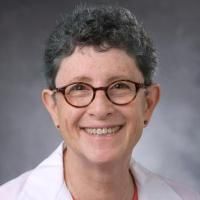Family-directed umbilical cord blood banking.
Date
2011-11
Journal Title
Journal ISSN
Volume Title
Repository Usage Stats
views
downloads
Citation Stats
Abstract
Umbilical cord blood transplantation from HLA-identical siblings provides good results in children. These results support targeted efforts to bank family cord blood units that can be used for a sibling diagnosed with a disease which can be cured by allogeneic hematopoietic stem cell transplantation or for research that investigates the use of allogeneic or autologous cord blood cells. Over 500 patients transplanted with related cord blood units have been reported to the Eurocord registry with a 4-year overall survival of 91% for patients with non-malignant diseases and 56% for patients with malignant diseases. Main hematologic indications in children are leukemia, hemoglobinopathies or inherited hematologic, immunological or metabolic disorders. However, family-directed cord blood banking is not widely promoted; many cord blood units used in sibling transplantation have been obtained from private banks that do not meet the necessary criteria required to store these units. Marketing by private banks who predominantly store autologous cord blood units has created public confusion. There are very few current validated indications for autologous storage but some new indications might appear in the future. Little effort is devoted to provide unbiased information and to educate the public as to the distinction between the different types of banking, economic models and standards involved in such programs. In order to provide a better service for families in need, directed-family cord blood banking activities should be encouraged and closely monitored with common standards, and better information on current and future indications should be made available.
Type
Department
Description
Provenance
Subjects
Citation
Permalink
Published Version (Please cite this version)
Publication Info
Gluckman, Eliane, Annalisa Ruggeri, Vanderson Rocha, Etienne Baudoux, Michael Boo, Joanne Kurtzberg, Kathy Welte, Cristina Navarrete, et al. (2011). Family-directed umbilical cord blood banking. Haematologica, 96(11). pp. 1700–1707. 10.3324/haematol.2011.047050 Retrieved from https://hdl.handle.net/10161/24675.
This is constructed from limited available data and may be imprecise. To cite this article, please review & use the official citation provided by the journal.
Collections
Scholars@Duke

Joanne Kurtzberg
Dr. Kurtzberg is an internationally renowned expert in pediatric hematology/oncology, pediatric blood and marrow transplantation, umbilical cord blood banking and transplantation, and novel applications of cord blood and birthing tissues in the emerging fields of cellular therapies and regenerative medicine. Dr. Kurtzberg serves as the Director of the Marcus Center for Cellular Cures (MC3), Director of the Pediatric Transplant and Cellular Therapy Program, Director of the Carolinas Cord Blood Bank, and Co-Director of the Stem Cell Transplant Laboratory at Duke University. The Carolinas Cord Blood Bank is an FDA licensed public cord blood bank distributing unrelated cord blood units for donors for hematopoietic stem cell transplantation (HSCT) through the CW Bill Young Cell Transplantation Program. The Robertson GMP Cell Manufacturing Laboratory supports manufacturing of RETHYMIC (BLA, Enzyvant, 2021), allogeneic cord tissue derived and bone marrow derived mesenchymal stromal cells (MSCs), and DUOC, a microglial/macrophage cell derived from cord blood.
Dr. Kurtzberg’s research in MC3 focuses on translational studies from bench to bedside, seeking to develop transformative clinical therapies using cells, tissues, molecules, genes, and biomaterials to treat diseases and injuries that currently lack effective treatments. Recent areas of investigation in MC3 include clinical trials investigating the safety and efficacy of autologous and allogeneic cord blood in children with neonatal brain injury – hypoxic ischemic encephalopathy (HIE), cerebral palsy (CP), and autism. Clinical trials testing allogeneic cord blood are also being conducted in adults with acute ischemic stroke. Clinical trials optimizing manufacturing and testing the safety and efficacy of cord tissue MSCs in children with autism, CP and HIE and adults with COVID-lung disease are underway. DUOC, given intrathecally, is under study in children with leukodystrophies and adults with primary progressive multiple sclerosis.
In the past, Dr. Kurtzberg has developed novel chemotherapeutic drugs for acute leukemias, assays enumerating ALDH bright cells to predict cord blood unit potency, methods of cord blood expansion, potency assays for targeted cell and tissue based therapies. Dr. Kurtzberg currently holds several INDs for investigational clinical trials from the FDA. She has also trained numerous medical students, residents, clinical and post-doctoral fellows over the course of her career.
Unless otherwise indicated, scholarly articles published by Duke faculty members are made available here with a CC-BY-NC (Creative Commons Attribution Non-Commercial) license, as enabled by the Duke Open Access Policy. If you wish to use the materials in ways not already permitted under CC-BY-NC, please consult the copyright owner. Other materials are made available here through the author’s grant of a non-exclusive license to make their work openly accessible.
